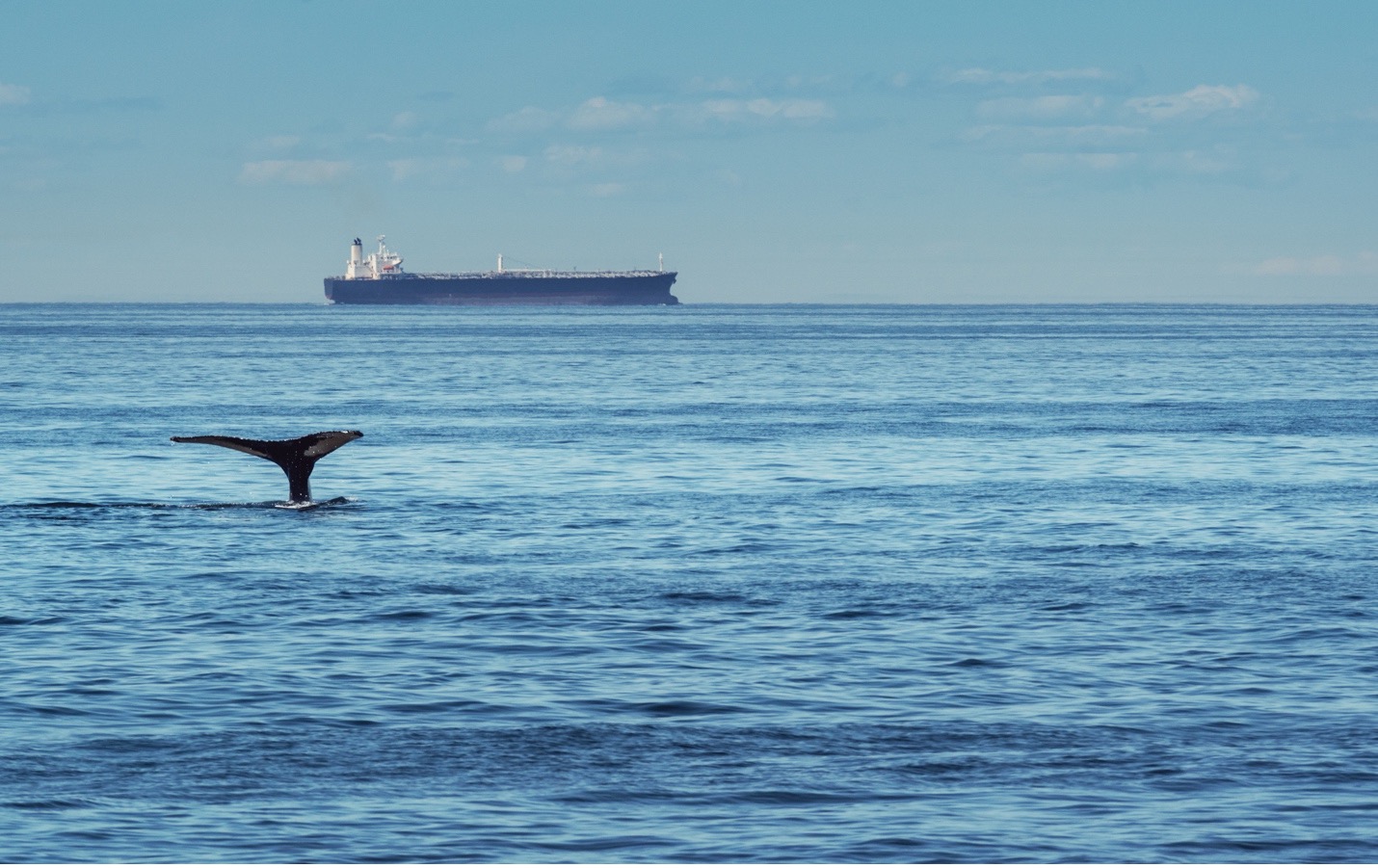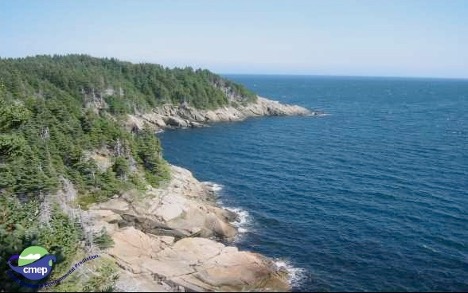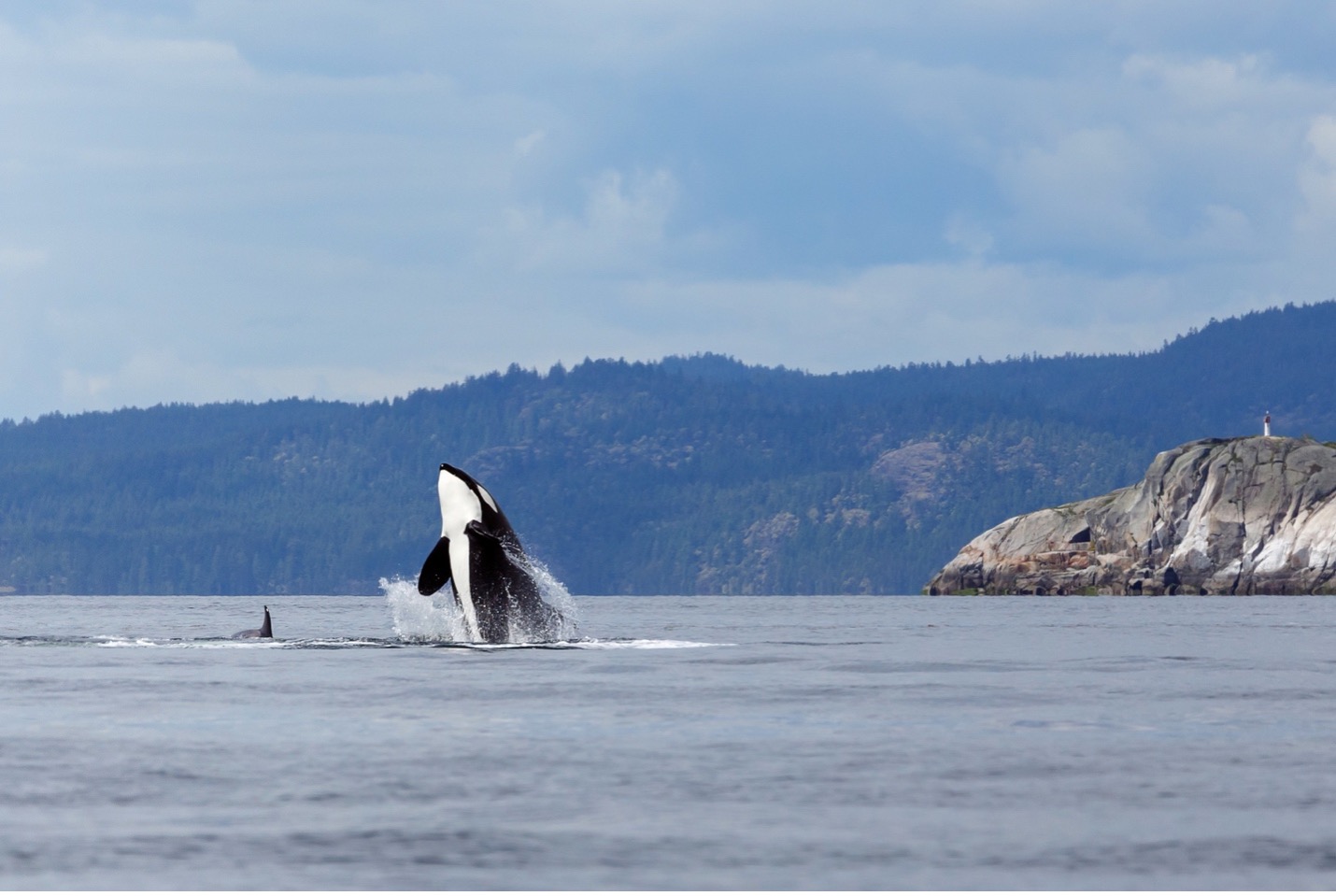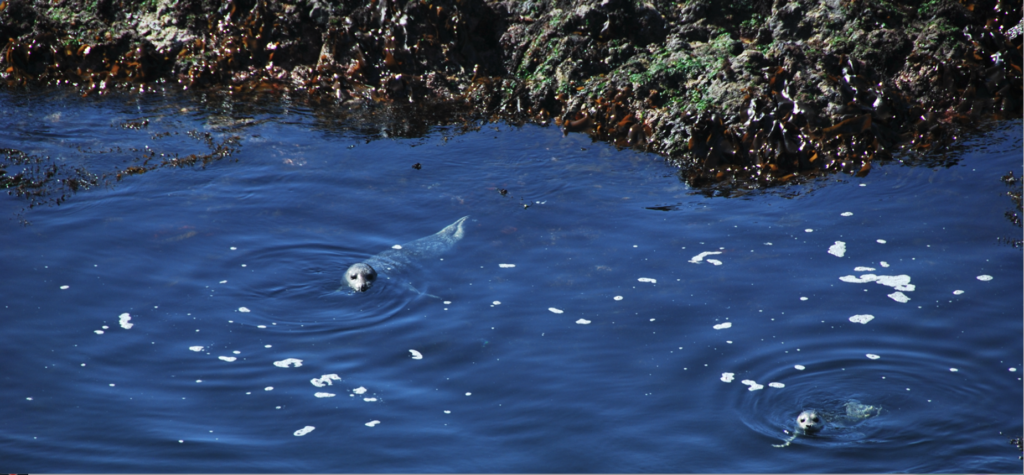How sharing the marine environment and managing its use can help ensure a sustainable future for our oceans and waterways.
Observe any small working harbour, and you’re likely to see a diverse cast of characters engaging in different activities, all operating and overlapping in time and space. Commercial fishing vessels, tourism operators, and local pleasure craft each vying for their place, bustling along next to marine species – like the aptly named harbour seal – that call these places home. Larger ports along Canada’s coasts have the added complexity of commercial shipping vessels. Space is limited, activities aren’t always compatible, and conflicts can boil over.
Ports and working harbours across the globe serve as a microcosm of the broader spatial tensions occurring in marine environments. As human populations and economies grow, marine ecosystems struggle to provide resources to satisfy multiple competing societal needs and interests. Marine space and resources are finite. The growing demands on the ocean’s resources and the increasing interest in conservation inevitably leads to disputes. So, what to do? Are there mechanisms that share and prioritize marine spaces and ensure a sustainable future for our ocean?
Answering these questions is no easy task. With the numerous human activities and users operating within diverse coastal and marine ecosystems, the social, economic, environmental, and cultural values that must be accounted for in plans are numerous. This is further complicated by the multidimensional nature of the marine environment, including the sea surface, the air above it, the water column, the seabed, and the subsoil beneath it. The ocean’s complex nature makes it more challenging to create spatial plans than on land.1 One popular planning approach to help address these challenges is Marine Spatial Planning (MSP).
As part of a larger research project on Demystifying Maritime Governance, Clear Seas asked researchers at Dalhousie University to investigate what MSP is and how it has been applied in Canada.
To fully understand the importance of MSP, you must appreciate what happens when decisions are made without considering both human uses and marine species needs. In the early 1980s, with the rise in vessel traffic through the Bay of Fundy, the Government of Canada established a Traffic Separation Scheme (TSS),2 a measure established by the International Maritime Organization (IMO) to help organize marine traffic flow and reduce the number of collisions and groundings in congested shipping areas. While the system had the desired effect, as it better organized shipping traffic through a busy fishing area, it unknowingly routed large ships through the middle of endangered North Atlantic right whales’ critical habitat, increasing the potential for deadly vessel strikes.2

Twenty years after adoption, this Traffic Separation Scheme was reviewed and amended based on research that overlaid spatial data of right whale sightings and vessel tracks. The spatial analysis showed that a small shift in the shipping lanes to avoid areas with high concentrations of right whales could significantly reduce vessel strikes. As a result, something profound happened: for the first time in the history of the IMO, shipping lanes were modified to protect marine mammals.2 In addition to this precedent-setting move, Fisheries and Oceans Canada and the Canadian Coast Guard established two whale sanctuaries in the Grand Manan and Roseway Basins. Now designated as Areas to Be Avoided, ships are encouraged to only sail through them under exceptional circumstances. This example shows how spatial planning can keep shipping safe while also reducing shipping-associated mortalities of right whales. This said, siloed, single-issue planning delayed this achievement, and the use of MSP would have ensured marine mammals and other marine users were considered from the outset.
What is marine spatial planning?
MSP is a strategic, practical, and internationally recognized process to ensure society benefits from the ocean while protecting the marine environment.3 The concept of MSP emerged in the early 1980s and gained popularity as an ecosystem-based management approach that accounts for the interconnection among the many different natural phenomena and actors within an ecosystem.4 MSP aims to protect marine habitats while making efficient use of marine resources.
To achieve this goal, MSP lays out a pragmatic process to organize the use of marine space and the interactions between human users and ecosystems. A ‘spatial vision’ is created for the marine environment that can allocate areas for economic activities while also considering the needs of the environment and the life it supports. This process engages all stakeholders and rightsholders to understand and capture the diversity of MSP objectives. As the name suggests, the approach is spatially based, applying data and information tied explicitly to a geographic location.
Building the Great Barrier Reef Marine Park in Australia during the 1980s was one of the first formally recognized MSP initiatives. In developing the Park, specific activities were assigned to defined areas through a process called zoning. Zoning as a spatial management tool has been effective for protecting biodiversity and community benefits because it manages direct uses of the region, including shipping, ports, fishing, and tourism.5 The system is similar to urban planning where zoning keeps incompatible activities separated. The MSP process which informed the decision to implement zoning has proven important, as zoning has become the foundation of managing for ecological resilience of the Great Barrier Reef.6 The use of MSP in the Marine Park demonstrates that MSP can be a useful mechanism to help keep the reef healthy, thus ensuring greater biodiversity, which underpins the economically successful tourism sector.5, 6

To this day, more than 75 countries have established MSP initiatives.7, 8 By 2030, it is expected that MSP will be used to inform management of at least a third of the world’s exclusive economic zones – the area that extends from the shore out to 200 nautical miles in which countries have control over activities and uses of marine resources.
What are the advantages of marine spatial planning?
While many coastal countries have established systems to manage dynamic coastal and marine environments, planning has often occurred on a sector-by-sector or case-by-case basis without considering the interactions among different human activities.9 As human activities were planned independently, even when their impacts on the environment were assessed, their interactions with each other and their cumulative effects on the environment were not examined. The results of this management approach can be inadequate. For example, in the Bay Fundy Traffic Separation Scheme example, ship safety planning did not initially account for marine mammals. This lack of consideration routed ships through areas with high densities of right whales, resulting in the unintended consequence of increased risk of vessel strikes.
As an alternative, MSP offers coastal countries an effective, comprehensive, and cohesive approach to implement a management framework rooted in ecosystem-based management and sustainable development. It is also a future-oriented and iterative process, allowing plans to evolve over time. MSP is gaining in application worldwide and resources for applying MSP in practice are developing in tandem, including numerous handbooks and toolkits, such as the step-by-step approach developed by IOC/UNESCO.
MSP is a public-facing process; as a result, participation and transparency are integral parts of it. Ideally, MSP’s ongoing stakeholder and rightsholder engagement provides marine users with more opportunities to be involved and have their voices heard during the decision-making process. Meaningful participation in MSP requires interpreting and visualizing various interests, objectives, and uses of marine spaces. Rightsholders and stakeholders are presented with all the information combined rather than participating in a piecemeal process. What makes MSP different from other planning processes is that it can create the opportunity for everyone to have a seat at the table.10
MSP provides the opportunity for discussing conflicting ideas and priorities. In theory,10 the process is designed to reach a consensus or compromise that most participants can accept.11 For example, during the establishment of the Eastern Scotian Shelf Integrated Management initiative, it was noted that the opportunity to hear other sectors’ points of view was helpful; moreover, the initiative’s driving big picture “one ocean” approach inspired collaboration.12
Furthermore, MSP offers an opportunity to use both scientific and local (Indigenous and non-Indigenous) knowledge in ocean planning.13 Datasets of different natures can be used together as part of the planning process, with Indigenous knowledge applied holistically rather than translated or altered to conform with Western scientific standards.14 As such, Indigenous knowledge and Western science can be used synchronously and viewed as equally valid. In this way, MSP is an inclusive framework. It enables the incorporation of Indigenous knowledge and perspectives in a respectful and culturally appropriate manner. Indigenous and coastal communities are included upfront by design and repeatedly contribute to the process.13 As a result, MSP can facilitate multi-cultural governance frameworks to include Indigenous Peoples as key actors in ocean policy-making and implementation.
Indigenous views:
Some of the strategies used by MSP, such as zoning, have marked similarities to management systems used by Indigenous Peoples prior to colonization. Many Pacific Island communities, for example, have traditionally used area and time-based restrictions to support the recovery of marine resources.15 Thus, while ecosystem-based management, zoning, and marine protected areas may be presented as recent inventions of Western Science, these practices have long been implemented by Indigenous Peoples.15
The Heiltsuk Nation on the central coast of British Columbia have engaged in management practices to govern marine resource since time immemorial. The Herring fishery was managed through a system of harvesting zones with restricted access to prevent overharvesting.16 Similarly, traditional harvesting practices confined the collection of northern abalone to above the lowest low tideline, ensuring a limited catch.17
How Indigenous Peoples managed, used, and protected their marine resources is a set of systems and knowledge that can help the world find solutions to move forward, ensuring economic prosperity and resilient ecosystems in conjunction with cultural and biological diversity.15
What is the role of digital technologies in marine spatial planning?
MSP collects spatial data to summarize patterns of human use and environmental process. By overlaying these data, it is possible to identify potential conflicts within and between marine uses and ecological values. One way to accomplish this is through a comprehensive ‘marine atlas’, a spatial reference to support the planning process. An MSP marine atlas isn’t your grandparents’ musty Readers Digest coffee table book. In the context of MSP, an atlas is a digital collection of spatial data that inform decision-making for marine space use and environmental sustainability.
Marine atlases make use of analytical and mapping tools to support participation and effective data integration. Sophisticated digital tools process spatial data to aid planners in identifying spatial layouts of use and conservation areas. Online software platforms provide users access to data and facilitates the creation of spatial plans. The program allows users to work collaboratively to draw spatial plans, get immediate analytics back, and engage in the process. These tools in the MSP toolbox support the overarching process of collaborative and unified management, allowing for better planning.
How does marine spatial planning relate to marine shipping?
Marine shipping plays a substantial role in the ocean system, both as an economic activity and the impact it has on other marine uses and the environment. Marine shipping is an important factor to consider in the MSP process; however, the governance of marine shipping activities is complex. Various regulations and actors need to deal with potential legal-political, economic, socio-cultural, and operational risks. Consequently, the need for adopting an integrated shipping governance framework has never been greater.
If correctly implemented, MSP can improve the governance of marine shipping. Shipping risk assessment is enhanced through collaboration across different departments and jurisdictions, ensuring critical information is shared. MSP supports a networked governance strategy that allows all rightsholders and stakeholders to become key actors in the planning and decision-making processes. MSP can also integrate planning initiatives on different spatial scales (e.g., national, regional, provincial, and local levels) and temporal scales (e.g., seasonal planning), providing a comprehensive planning framework to address spatial-temporal diversities and uncertainties. MSP can support data collection and sharing, creating spatial plans to identify risks, prioritizing areas of focus, and assigning resources for shipping governance. While shipping is traditionally governed from the top-down for safety reasons, decisions about how to use ocean space benefits from a multitude of voices.
Successful experiences from other jurisdictions have shown MSP’s advantages in balancing multiple objectives in marine shipping governance, including marine safety, economic development, and environmental protection. Most recently, MSP initiatives have been developed to manage marine traffic in a collaborative way within the European Union’s MSP framework.18 This policy framework allows member states to work across borders and sectors to ensure that marine shipping activities are taking place in an efficient, safe, and sustainable way.
Marine shipping and marine spatial planning in Canada: Stories from three coasts
Given the advantages of MSP and its success in other jurisdictions, how does Canada measure up? How have spatial management practices been applied to shipping governance in Canada, and how has shipping been considered in MSP initiatives?
The recent establishment of an MSP initiative by the Government of Canada identified Fisheries and Oceans Canada (DFO) as the lead federal agency responsible for developing an integrated ocean governance framework under the Oceans Act. DFO has proposed MSP as a collaborative and transparent approach to support the implementation of the Oceans Protection Plan. This is an important step forward because historically, although Canada’s spatial planning initiatives have focused on conservation, they have not always considered all the actors involved, including marine shipping. The following examples from Canada’s three coasts track the evolution of spatial planning in Canada.
Atlantic Coast
The Eastern Scotian Shelf Integrated Management (ESSIM) Initiative, announced in 1998, was one of Canada first offshore focused integrated ocean management initiatives.12 More comprehensive than the Bay of Fundy Traffic Separation Scheme, ESSIM emphasized coordinated management, considering marine conservation, and enabling enhanced collaboration among federal departments, the government of Nova Scotia, First Nations, industry partners, academia, and coastal communities. Although ESSIM was established with a nested and collaborative structure for groups to achieve compromises, these processes were more expensive and time-consuming than expected.19, 20 The proposed integrated planning evolved into sector-based planning led by Oceans and Fisheries Canada due to Canada’s fragmented ocean environment governance.21 In the end, Transport Canada’s limited engagement made comprehensively governing marine commercial shipping impossible under ESSIM.20 Furthermore, while First Nations were represented in the ESSIM Stakeholder Advisory Committee, there was not enough information to describe their engagement with the marine shipping sector and its impacts on traditional practices and livelihood.

ESSIM concluded in 201222 and has been used to build the Regional Oceans Plan – Scotian Shelf, Atlantic Coast, Bay of Fundy.23 Transport Canada has implemented speed restrictions to make marine shipping safer and has enhanced collaboration with Mi’kmaq to co-develop the Cumulative Effects of Marine Shipping workshops for the Bay of Fundy pilot project.24
Pacific Coast
The Pacific North Coast Integrated Management Area (PNCIMA) was launched as an integrated ocean management initiative by the federal government with the intention of working with the government of British Columbia, Indigenous Peoples, and other stakeholders. However, in 2011 the Government of Canada withdrew from the public-private funding partnership, “altering the PNCIMA process from a spatially-based, comprehensive, multi-scale planning initiative to a high level, non-spatial, strategic plan.”25 The PNCIMA plan was completed and formally endorsed in 2017; it has served as guidance for the implementation of other marine planning goals.26
Due to withdrawal of the Government of Canada, the Marine Plan Partnership for the North Pacific Coast (MaPP) was born out of the desire of the participating First Nations and the province of BC to continue to engage in spatially-based planning. MaPP used a MSP framework in which the provincial government and 17 First Nations committed to a governance structure that was co-led with equal decision-making power shared for all aspects of the process.25 The partners developed community-based marine use plans at different geographic scales, with community-based plans by First Nations within each of their traditional territories providing the foundation for subsequent sub-regional and regional level plans.25 However, once again, MaPP does not deal with either shipping or fishing activities as the federal government regulates those activities and did not participate in the process. In the context of the First Nations community-based plans encouraged through the MaPP process, the Haida Nation has become pioneer among local First Nations, establishing a Marine Awareness Office and developing community-based shipping and marine response initiatives.
Transport Canada is currently assessing the feasibility of altering the Traffic Separation Scheme in the Strait of Juan de Fuca to avoid areas of high Southern Resident killer whale density. Because this species is critically endangered, reduced risk of vessel strikes and less acoustic disturbance are both central to its recovery. With plans for engagement to receive feedback from Indigenous communities and stakeholders integrated into the process, elements of an MSP framework are being applied.

Canadian Arctic
The Canadian Arctic holds several examples of more integrated planning approaches. Notably, the Beaufort Sea Integrated Management Planning Initiative, the Tarium Niryutait Marine Protected Area (MPA), the Anguniaqvia Niqiqyuam MPA, the Tuvaijuittuq MPA, and the Tallurutiup Imanga National Marine Conservation Area, which have considered marine shipping and its impacts on the marine environment, traditional practices, and livelihood.27 Following the best practices of the MSP framework, these initiatives have prioritized open dialogue and two-way communication with Indigenous communities.
Northern Low-Impact Shipping Corridors – launched by Transport Canada under the Oceans Protection Plan and supported by the Canadian Coast Guard and Hydrographic Services – uses spatial planning to minimize effects of marine shipping and guide regulatory decision-making and governance in Arctic waterways. The project is using Indigenous knowledge and observations of the marine environment to co-develop management systems that respect and protect Inuit marine uses. The Artic Corridors and Northern Voices is an initiative that has worked closely with the Government of Canada and Inuit leaders to ensure Inuit perspectives are incorporated, culturally significant marine areas are identified, and potential management strategies are developed for low impact marine shipping. Engagement with Indigenous, territorial, and provincial governments, industry, non-governmental organizations, and academia are also occurring. MSP creates opportunities for all parties who use, are invested, or have rights in the area to participate in the planning process.
While not implemented yet, these Corridors are expected to become an effective governance framework for governing marine shipping activities; new input for the project is being taken until January 1, 2022.28
Lessons learned for the governance of marine shipping in Canada
Building on Canada’s existing area-based marine conservation network, MSP can facilitate the collaboration of federal, provincial, territorial institutions, Indigenous rightsholders, and stakeholders to develop transparent plans for the sustainable use of the ocean and coasts. Oceans and Fisheries Canada is currently working on MSP initiatives.
MSP has the potential to improve Canada’s marine shipping governance and provide long term-benefits to the economy and the environment. Implementing MSP requires strong collaborations among different government departments, industry partners, stakeholders, and rightsholders. Achieving true interdepartmental and cross-cultural governance is not straightforward. There has been a lack of clarity for how different responsibilities can work across jurisdictions with shared goals. Canada’s whole-of-government framework and commitment to reconciliation with Indigenous Peoples can provide some foundation for cooperation among multiple levels of government while using MSP.
MSP creates an opportunity for the marine shipping industry to work collaboratively with all federal agencies and other invested parties. The convenience of establishing best practices with everyone at the table incentivizes the industry to participate, both as part of social responsibility and streamlining the establishment of regulations.
MSP also provides a framework through which Indigenous Peoples, the federal, provincial, and territorial governments, industry, non-governmental organizations, and Canadian citizens and residents can participate as partners in planning processes for marine spaces. Ensuring economic prosperity, sustainability, cultural diversity, and environmental resilience within a marine setting on all of Canada’s coasts is a worthy goal, and MSP provides a pathway to achieve it.
Research Team
This blog was written in collaboration with Dalhousie University’s researchers as part of Clear Seas’ Demystifying Maritime Governance research project.

Weishan Wang is an interdisciplinary Ph. D. candidate at Dalhousie University. Her research interests include the governance of marine shipping, marine spatial planning (MSP), and Inuit knowledge. Her doctoral research focuses on enhancing shipping governance in the Canadian Arctic by integrating risk governance, Inuit perspectives and MSP.

Claudio Aporta holds a Ph. D. in cultural anthropology from the University of Alberta. He is an associate professor in the Marine Affairs Program at Dalhousie University. His work focuses on the documentation, visualization and understanding of indigenous environmental knowledge, with a geographic focus in the Canadian Arctic and Atlantic coastal and marine regions.

Leah Beveridge is an interdisciplinary Ph. D. candidate at Dalhousie University. She has been studying Arctic shipping in Canada since 2013, now focusing on whether and how reconciliation can occur through marine safety and shipping initiatives in partnership with Inuvialuit.
References
1 Ehler, C., Zaucha, J., & Gee, K. Maritime/marine spatial planning at the interface of research and practice. (2019). In Maritime spatial planning.
2 Changing marine policy to protect right whales. (n.d.). Canadian Whale Institute.
3 Marine Spatial Planning. (n.d.). UNESCO.
4 Ehler, C., & Douvere, F. Marine spatial planning, a step-by-step approach towards ecosystem-based management. (2009). IOC Manual and Guides No. 53, ICAM Dossier No. 6. Intergovernmental Oceanographic Commission and Man and the Biosphere Programme, UNESCO, Paris. http://dx.doi.org/10.25607/OBP-43
5 Hassan, D., & Alam, A. Marine spatial planning and the great barrier reef marine park act 1975: An evaluation. (2019). Ocean & Coastal Management. https://doi.org/10.1016/j.ocecoaman.2018.10.015
6 Day, J. C., Kenchington, R. A., Tanzer, J. M., & Cameron, D. S. Marine zoning revisited: How decades of zoning the Great Barrier Reef has evolved as an effective spatial planning approach for marine ecosystem‐based management. (2019). Aquatic Conservation: Marine and Freshwater Ecosystems. https://doi.org/10.1002/aqc.3115
7 Santos, C. F., Agardy, T., Andrade, F., Crowder, L. B., Ehler, C. N., & Orbach, M. K. Major challenges in developing marine spatial planning. (2018). Marine Policy. https://doi.org/10.1016/j.marpol.2018.08.032
8 Ehler, C.N. Two decades of progress in Marine Spatial Planning. (2021). Marine Policy. https://doi.org/10.1016/j.marpol.2020.104134
9 Ehler, C., & Douvere, F. Marine spatial planning, a step-by-step approach towards ecosystem-based management. (2009). IOC Manual and Guides No. 53, ICAM Dossier No. 6. Intergovernmental Oceanographic Commission and Man and the Biosphere Programme, UNESCO, Paris. http://dx.doi.org/10.25607/OBP-43
10 Flannry, W., Healy, N., & Luna, M. Exclusion and non-participation in Marine Spatial Planning. (2018). Marine Policy. https://doi.org/10.1016/j.marpol.2017.11.001
11 White, C., Halpern, B. S., & Kappel, C. V. Ecosystem service tradeoff analysis reveals the value of marine spatial planning for multiple ocean uses. (2012). Proceedings of the National Academy of Sciences – PNAS. https://doi.org/10.1073/pnas.1114215109
12 McCuaig, J. & Herbert, G. Review and Evaluation of the Eastern Scotian Shelf Integrated Management (ESSIM) Initiative. (2013). Oceans and Coastal Management Division, Ecosystem Management Branch, Fisheries and Oceans Canada, Maritime Region, Bedford Institute of Oceanography.
13 Diggon, S., Butler, C., Heidt, A., Bones, J., Jones, R., & Outhet, C. The marine plan partnership: Indigenous community-based marine spatial planning. (2021). Marine Policy. https://doi.org/10.1016/j.marpol.2019.04.014
14 Parsons, M., Taylor, L., & Crease, R. Indigenous environmental justice within marine ecosystems: A systematic review of the literature on indigenous peoples’ involvement in marine governance and management. (2021). Sustainability. https://doi.org/10.3390/su13084217
15 Vierros, M. K., Tawake, A., Hickey, F., Tiraa, A., & Noa, R. Traditional Marine Management Areas of the Pacific in the Context of National and International Law and Policy. (2010). United Nations University, Institute of Advanced Studies, Traditional Knowledge Initiative.
16 Powell, M. Divided Waters: Heiltsuk Spatial Management of Herring Fisheries and the Politics of Native Sovereignty. (2012). Western Historical Quarterly. https://doi.org/10.2307/westhistquar.43.4.0463
17 Lee, L. C., Thorley, J., Watson, J., Reid, M., & Salomon, A. K. Diverse knowledge systems reveal social–ecological dynamics that inform species conservation status. (2018). A journal for the Society of Conservation Biology. https://doi.org/10.1111/conl.12613
18 European Commission. Proposal for a Directive for the European Parliament and of the Council establishing a framework for MSP and ICM. COM (2013) 133 final. Brussels, 12.3.2013
19 Guénette, S., & Alder, J. Lessons from marine protected areas and integrated ocean management initiatives in Canada. (2007). Coastal Management. https://doi.org/10.1080/10.1080/08920750600970578
20 Rutherford, R. J., Herbert, G. J., & Coffen-Smout, S. S. Integrated Ocean management and the collaborative planning process: the Eastern Scotian Shelf Integrated Management (ESSIM) Initiative. (2005). Marine policy. https://doi.org/10.1016/j.marpol.2004.02.004
21 Flannery, W., & Ó Cinnéide, M. Deriving lessons relating to marine spatial planning from Canada’s eastern Scotian shelf integrated management initiative. (2012). Journal of Environmental Policy & Planning.
22 Scotian Shelf, Atlantic Coast and Bay of Fundy. (2018). Government of Canada.
23 Fisheries and Oceans Canada. Regional Oceans Plan – Scotian Shelf, Atlantic Coast, Bay of Fundy Background and Program Description. (2019). Government of Canada.
24 Transport Canada. Results of Canada’s Oceans Protection Plan East Coast. (2021). Government of Canada.
25 Diggon, S., Bones, J., Short, C. J., Smith, J. L., Dickinson, M., Wozniak, K., Topelko, K. & Pawluk, K. A. The Marine Plan Partnership for the North Pacific Coast – MaPP: A collaborative and co-led marine planning process in British Columbia. (2020). Marine Policy. https://doi.org/10.1016/j.marpol.2020.104065
26 Pacific North Coast integrated management area plan. (2017). Government of Canada.
27 Beaufort Sea Partnership. Integrated Ocean Management Plan (IOMP) for the Beaufort Sea: 2009 and beyond. (2009). Beaufort Sea Planning Office.
28 Fisheries and Oceans Canada. Northern Low-Impact Shipping Corridors. (2021). Government of Canada.



